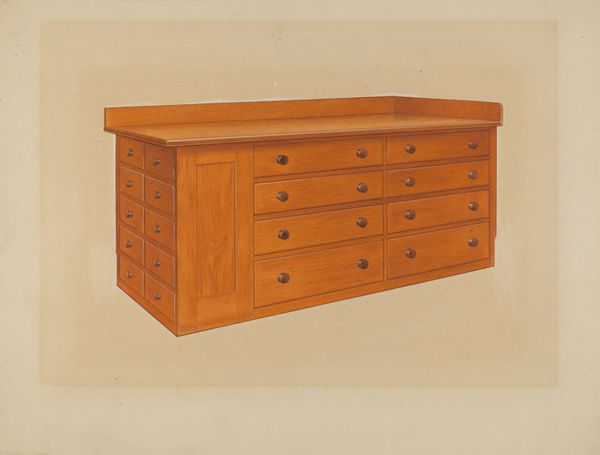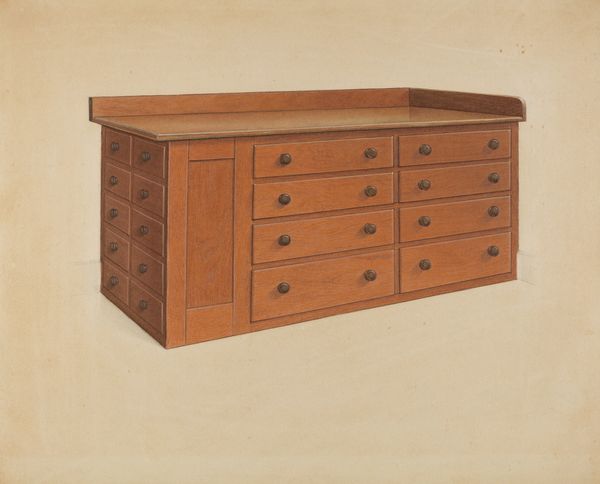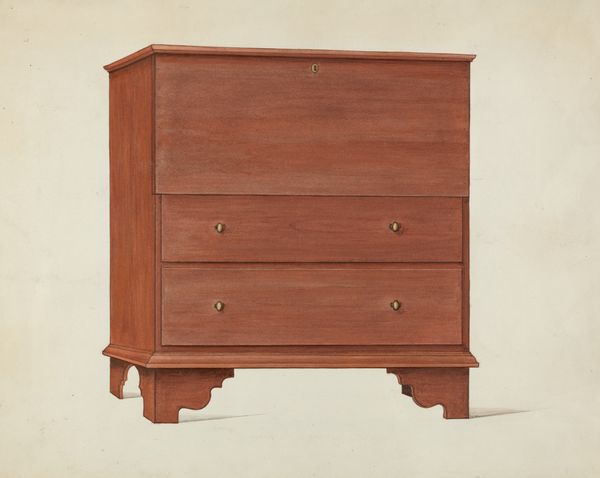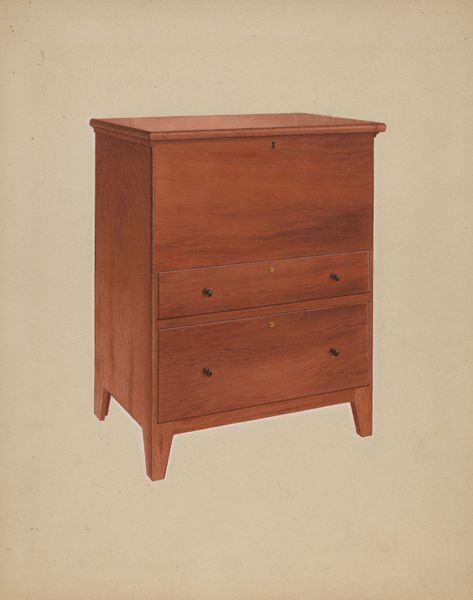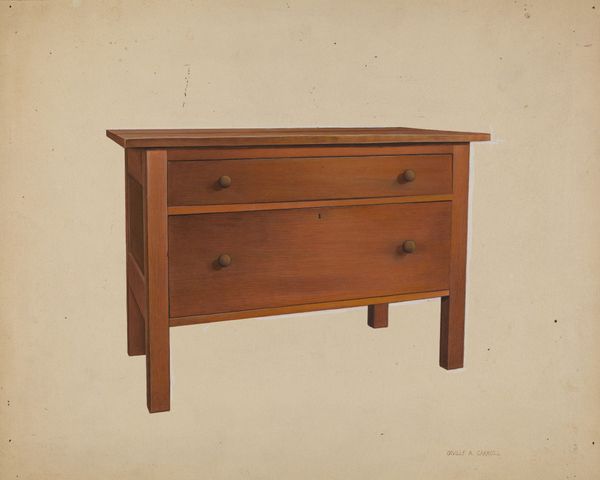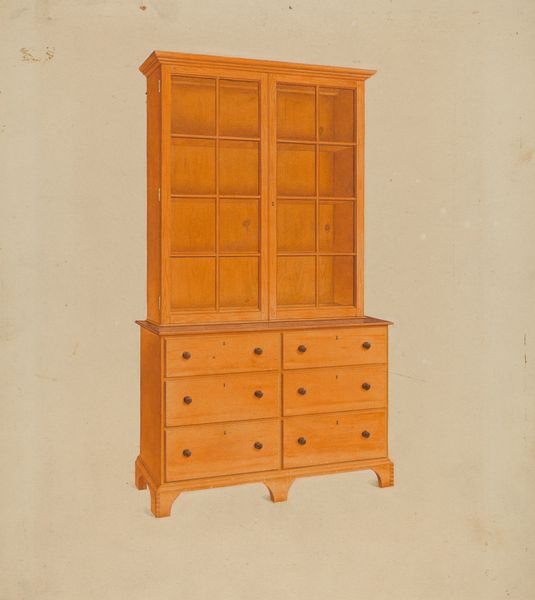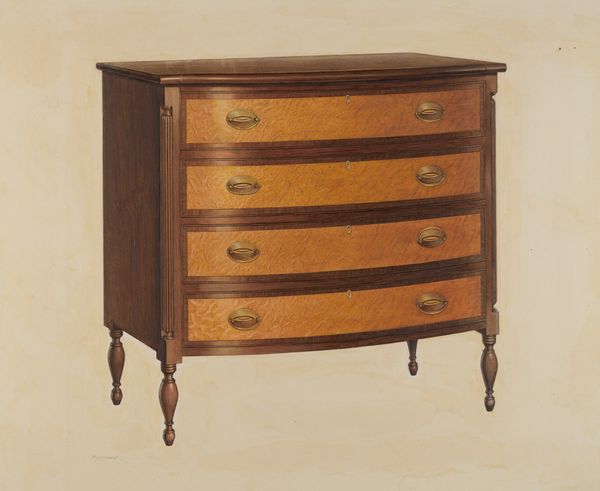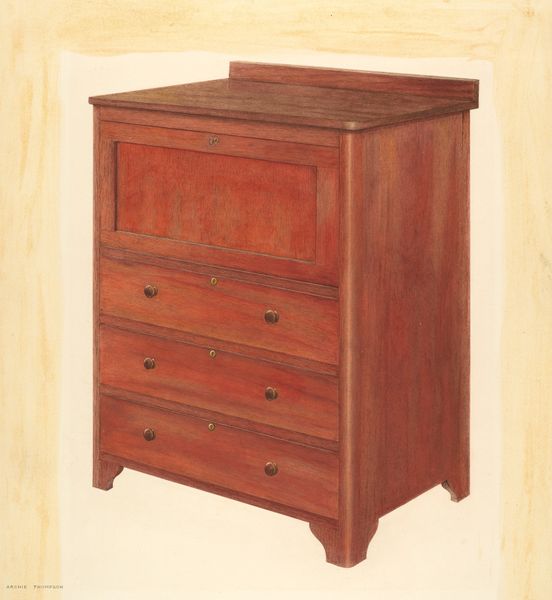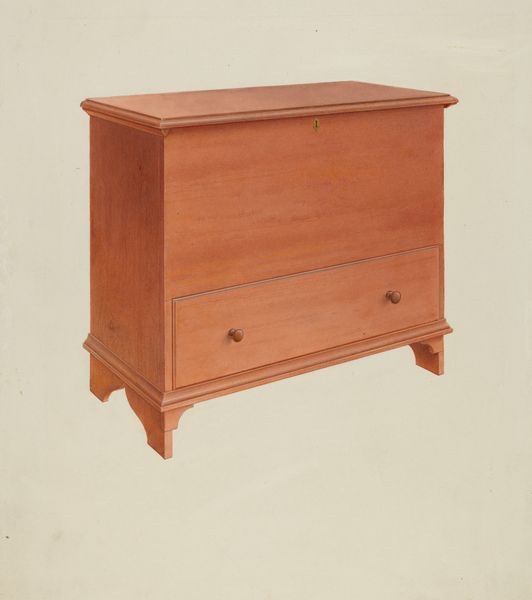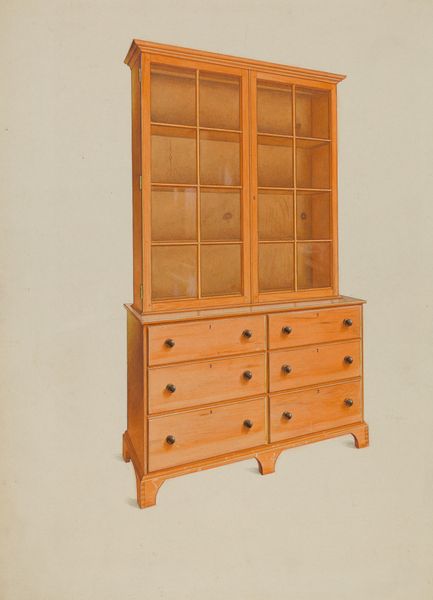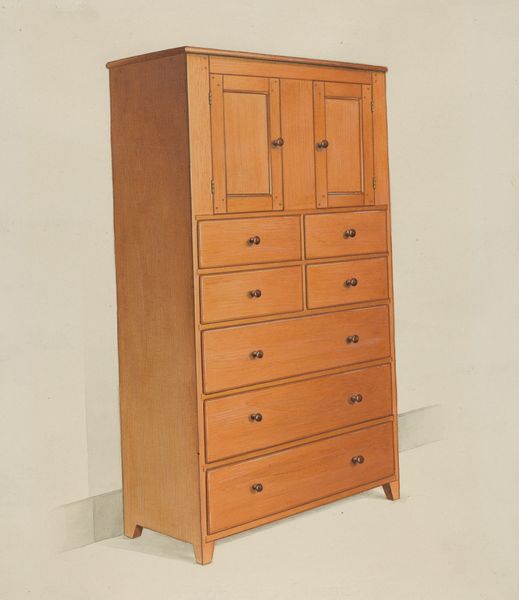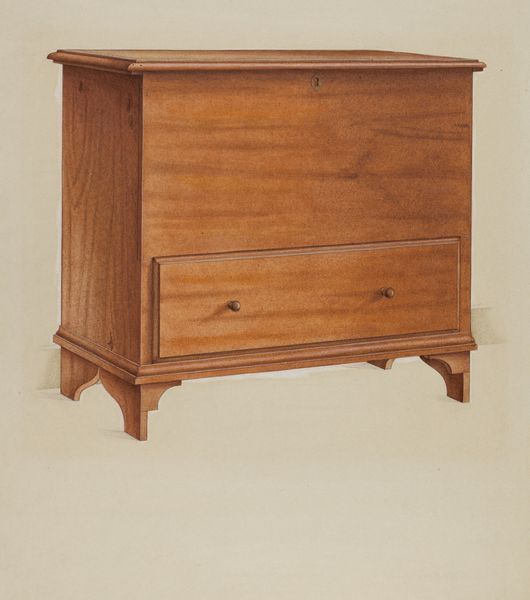
drawing, watercolor
#
drawing
#
water colours
#
watercolor
#
folk-art
#
watercolor
#
realism
Dimensions: overall: 27.9 x 35.5 cm (11 x 14 in.) Original IAD Object: 65" high; 51 1/2" wide; 19 1/2" deep
Copyright: National Gallery of Art: CC0 1.0
Editor: This is Ray Holden’s watercolor drawing, "Shaker Tailor's Work Bench," created around 1936. It has such a pristine and organized feeling, and I am wondering what catches your eye when you look at this piece? Curator: Immediately, it's the repetition of forms—the rectilinear shapes, the circular drawer pulls. This redundancy, these sets and sequences of geometric relationships create a certain order but it is also in conflict because it teases the viewer toward wanting to understand the purpose and the sequence within this artwork. Notice how each form occupies an area with near symmetrical relation; this emphasis creates a unique balance. Editor: So, it’s about the visual balance and relationship of shapes? Curator: Precisely. The piece highlights formal, elemental shapes, color, and design in a two-dimensional, distilled depiction of three-dimensional forms. Color becomes line, color becomes volume, color becomes shadow. This emphasizes the planes and simple geometries inherent in the subject itself. Look closely at the tabletop — notice the shading used to give a sense of depth. It transforms a basic flat shape into a simulated projection of three-dimensionality on the paper’s two-dimensional space. Editor: The light source feels important too; where the tone shifts and describes the geometry? Curator: It is vital to consider the construction of tone, color, shape and light in our perception, yes. These formal qualities dictate how our senses work to extract meaning. Consider the texture here as well, and the directionality with which these surfaces present volume. Editor: That makes me appreciate how much information Holden conveys by manipulating a very limited palette of colors and tones. I’m curious to explore some of the artist’s other pieces now to study their engagement with color! Curator: Exactly, now you understand how formalism challenges you to find the story, tone, and geometry, allowing you to analyze these elemental components independent of subject or purpose.
Comments
No comments
Be the first to comment and join the conversation on the ultimate creative platform.
